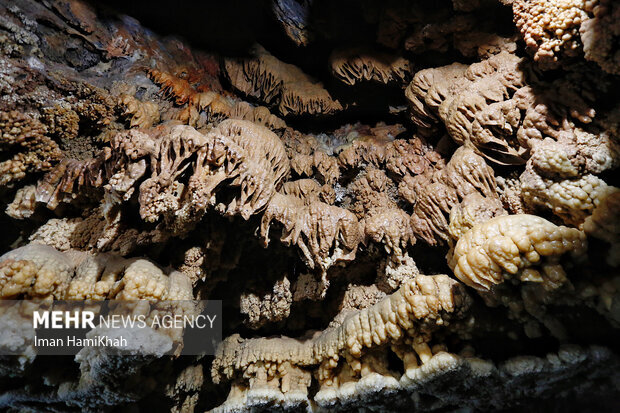Rocky cave discovered accidentally in western Iran

TEHRAN – A cave has recently been discovered accidentally in a mountainous region in western Iran where Mehran-Ilam Road passes through, Ilam’s tourism chief has said.
“Construction workers discovered the cave during a project for widening the road for the convenience of travelers in the region,” ILNA quoted Farzad Sharifi as saying on Friday.
The limestone cave has narrow corridors, some of which are not accessible, and it is stalactite-covered at the top, the official added.
As the cave is located on the main road, it has the potential to become one of the region’s tourist attractions, he added.
However, more geological studies and research on the cave, its age, length and width, type of rock texture, possible living organisms, number of corridors and halls, and other items will be needed, he explained.
Exploring a cave may not be on the “to-do list” of travelers in Iran. However, Karaftu, Ali-Sadr and Quri Qaleh, and Katale-Khor are among the most visited caves.
Iran is geologically a part of the Alpine-Himalayan organic belt. According to Britannica Encyclopedia, the enigmatic evidence of human presence on the Iranian plateau is as early as Lower Paleolithic times.
The first well-documented evidence of human habitation is in deposits from several excavated cave and rock-shelter sites, located mainly in the Zagros Mountains of western Iran and dated to Middle Paleolithic or Mousterian times (c. 100,000 BC).
Home to almost half of Iran’s UNESCO sites, western Iran is a land of hospitable people, wild extremes, and wilder history, and it may be an independent traveler's adventure playground. The region also witnessed the rise and fall of many great empires once bordering Mesopotamia, Ottoman Turkey, and Czarist Russia.
From the fecund Caspian coast to the stark, mountainous northern borders, and the crumbling desert ruins of the southern plains, the region hosts everything from paddy fields to blizzards to Persian gardens.
ABU/AFM
